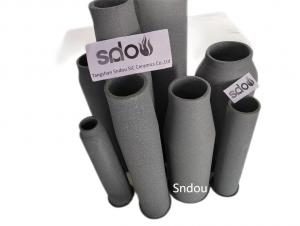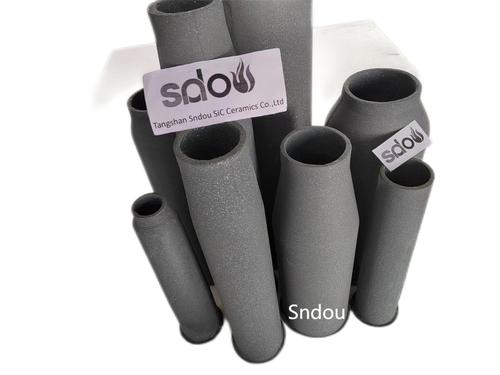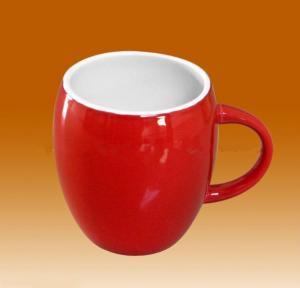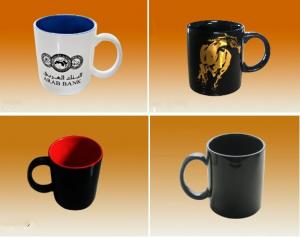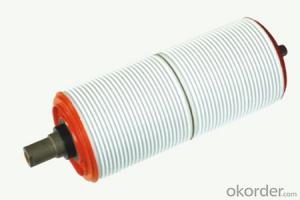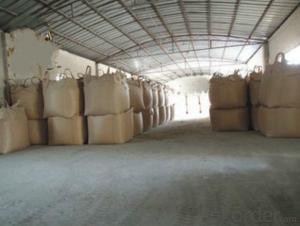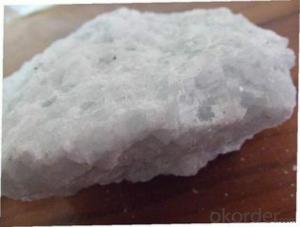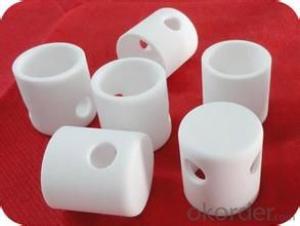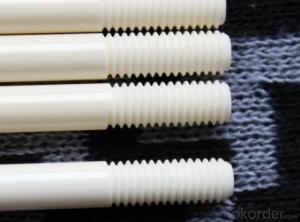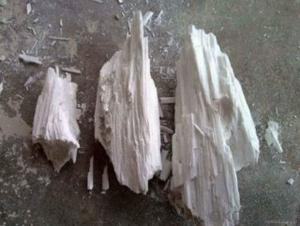RSiC Burner Nozzle Tubes by recrystallized silicon carbide
- Loading Port:
- Tianjin
- Payment Terms:
- TT OR LC
- Min Order Qty:
- 5 pc
- Supply Capability:
- 888888 pc/month
OKorder Service Pledge
Quality Product, Order Online Tracking, Timely Delivery
OKorder Financial Service
Credit Rating, Credit Services, Credit Purchasing
You Might Also Like
Specification
Application:
Gas Burners for ceramic kiln furniture
Advantage:
energy saving & higher loading ability with lighter weight
Max working temp:
1700C under oxygen atmosphere of shuttle & tunnel kiln
Density:
2.72g/cm3 above
Forming way:
slip casting
Recrystallized silicon carbide RSiC burner nozzle:
Also named rsic burner tube,flame tubes,burners cones, burner sleeve.
Excellent oxidization resistance & longer life under 1700C Celsius,
Energy saving and easy replacement.
Sndou © Ideal kiln furniture for instead of refractory burner bricks. resic burner tubes for gas burners of shuttle kiln, tunnel kilns.made in china Tangshan Sndou sic ceramics co.,ltd

- Q: Can I fire small ceramic sculptures with a torch? If it's possible, can you give me details on how to do it? Best answer to whoever gives me thorough details. Thanks!
- No way man. To get to a fired state, clay has to go through several different stages that can only happen at very high temperatures. All that will happen from a torch is that maybe some of the water will evaporate and it'll dry out. At 575C, the clay goes through 'Quartz Inversion' and this is the point at which it will never return to an unfired state - before this, if the clay gets wet again it can slake down into slip. There are lots of other changes that happen after that (the creation and re-organizing of crystals, etc) but it's all moot because there's no way a torch is going to get that hot. *Maybe*, *Maybe* if you had it in a very well insulated box and it was a really big flame and you could sustain it for 2 days but even then, if the piece was right next to the flame it would probably crack anyway I'd say you should find your local potter's guild and ask if someone could fire it for you.
- Q: I am signed p for an evening ceramics class this coming fall semester at a community college. So far I have two other classes picked out and thinking about a 4th class so I can be full time. My only concern is that ceramics wills be too much and too difficult for me as I will also be 5 months pregnant at the start of school in August. So has anyone ever taken ceramics? Will it be too much for me to take on? Will i also have to put out a lot of money for materials? Thanks
- this is fairly standard fare. using high temp paint is essential. by all means spray before assembly. DO tape areas we don't want paint on though. eg rubber seals. orifices for pipes. allow to dry fully .ideally two coats is best but don't heavily spray as we will get 'runs' in paint.
- Q: What is the difference between ceramics?
- The difference between pottery and porcelain:Pottery appeared earlier than porcelain. There were pottery in the primitive stone age. Porcelain did not appear until the end of the northern and Southern DynastiesTao is not (except pottery) and uranium when burning temperature is not high porcelain, material is a kind of clay, porcelain to uranium, material may be a mixture of soil and minerals; produce different colors by the mineral elements in the Tao; only 3 colors: red; 100; determined by black. Soil color.The main raw material of China is mud; the color is mostly white or yellow; and the finished product is determined by uraniumBesides, the hardness of pottery is inferior to that of porcelain; but porcelain is not as good as earthenware;
- Q: I have a fluval 305 filter which has six ‘chambers‘ inside, three have ceramic rings and three have carbon in. If i were to remove the carbon from some or all of the chambers and replace them with ceramic rings would this improve my filtration capacity or make no difference?
- More ceramic rings means there is room for more bacteria and so technically it does improve your 'filtration capacity', but that says nothing for the extra mechanical filtration and water changes which are both also part of that formula for stocking heavier. As for whether you need more as your tank is now - well if you don't measure ammonia or nitrite in the water of a cycled tank, then your filter is doing its job the way it is. Filter floss and foam is a better idea for those extra baskets. Simple sponge is very porous and made from lots of smaller threads - in the end it offers as much surface area for bacteria as any media, while it does it's other job too - improving your mechanical filtration. In fact, by putting filter floss in the baskets so the water hits it before hitting the ceramics, your ceramics will remain cleaner and unclogged for it. I stopped using carbon myself many years ago because I realized there was nothing for it to really do since the water treatment plant and conditioner have taken care of all the harmful elements, and to keep it working it would need to be changed every water change anyway. Most people don't really need carbon whether they know it or not, unless for a specific purpose, and those who hang on to the same carbon are effectively not using it anyway.
- Q: I was wondering what are the circle labels made out of in the glass-ceramic cooktops?Thank you
- Fix the tire with the hunk of metal which could blow-out anytime.
- Q: Main types of ceramic membranes
- There are 3 types of configurations, namely, flat plate, tubular and multi-channel, in which the flat film is mainly used in small-scale industrial production and laboratory research. A tubular membrane is formed in combination with a tubular heat exchanger to increase film loading, but has been gradually withdrawn from industrial applications due to its strength. The size of the applied ceramic membrane usually adopts a multi-channel configuration, that is, a plurality of channels are distributed on a circular cross-section, and the general number of channels is 7, 19, 37, etc.. The main business of the inorganic ceramic membrane preparation technology: using solid particle sintering preparation carrier and microfiltration membrane, prepared by ultrafiltration and nanofiltration membrane, sol-gel glass membrane, using special technology using phase separation (such as chemical vapor deposition, electroless plating, etc.) the preparation of microporous membrane or dense membrane, its basic theory relates to the material subject of colloid and surface chemistry, materials chemistry, solid state ionics, material processing. Because of its high temperature resistance, solvent resistance, acid and alkali resistance, high mechanical strength and easy regeneration, porous ceramic membranes are widely used in food, biological, chemical, energy and environmental protection fields. A group of alumina and special sintering accelerator as the starting material, a systematic and thorough study was carried out in 1400 DEG C firing support prepared by temperature, permeability, mechanical properties and resistance to corrosion performance of uniform support.
- Q: I had this beautiful ceramic bear plate.I accidentally broke it.I would buy another one but the problem is that it is so rare to find.Is there any proffessional that could repair it to the way it is?
- If you want a professional to fix it make sure you have all the pieces and then look for a skilled restorer in your area. This restorer should have extensive knowledge of ceramic materials, processes and how to fix and mask cracks and breaks. They might be expensive though. You could look for a ceramic artist as they would almost always know how to repair. If you want to repair it yourself, make sure you have all the pieces, then purchase an glue or epoxy adhesive meant for porous surfaces. Glue the pieces back together and wear gloves while you do this. You might have to tape pieces in place in order to ensure they bond, use either blue tape or artists tape, as they will not damage the surface. To hide the cracks if they are noticeable use watercolors to tint the cracks. I hope this helps
- Q: I would like to know what the difference between a CERAMIC and TOURMALINE flat iron is. I also would like to know what do each do. And which do you recomend I should buy? -Which do you use and why?And what is the best brand of the type of flat iron you recommend?Thank You and hope it‘s not too much to ask for ;D!
- I'd like Tourmaline flat irons because it can produce great number of negative ions.But,as you know,it's expensive than the other. Tourmaline or not? Make your choice.
- Q: Comparing the similarities and differences between structural ceramics and functional ceramics
- Special ceramic material using ceramic on sound and light, electric, magnetic and thermal properties have made known as functional ceramics. Many kinds of functional ceramics, use different. For example, according to the difference of electrical properties of the ceramics made of conductive ceramics, semiconductor ceramics, dielectric ceramics, ceramic insulation and other electronic materials.
- Q: Can a ceramic knife sharpener sharpen a stainless steel blade?
- Yes, that's what it's made for.
Send your message to us
RSiC Burner Nozzle Tubes by recrystallized silicon carbide
- Loading Port:
- Tianjin
- Payment Terms:
- TT OR LC
- Min Order Qty:
- 5 pc
- Supply Capability:
- 888888 pc/month
OKorder Service Pledge
Quality Product, Order Online Tracking, Timely Delivery
OKorder Financial Service
Credit Rating, Credit Services, Credit Purchasing
Similar products
Hot products
